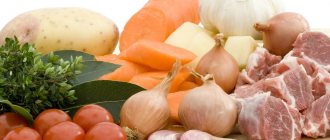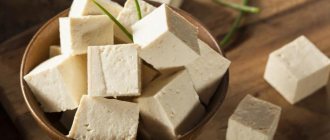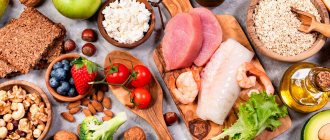If you really want to know what's going on your plate, it's worth getting into the habit of reading labels. At the end of this article there is a video where Lena Degtyar examines the labels of some products purchased in the supermarket.
Different countries have different standards and requirements for labels, and in Russia there is also a list of requirements for food manufacturers and importers. Food distributors are required to provide a range of information to help you determine the quality of the product.
Expiration date, release date and storage conditions
The first thing you should pay attention to is the release date, expiration date and storage rules for the product. The manufacturer must indicate all this data on the product label.
Although our initial ability to determine the quality of a product depends on this information, it is often not so easy to parse. Sometimes the sets of numbers on the packaging resemble encryption, and confusion arises between the concepts of “expiration date” and “product sell-by date.”
Choose products with a clear production date and expiration date.
It is also important to pay attention to the storage conditions of the product, because if they are not observed, the shelf life will be significantly shortened. In addition to storage rules, the label often contains information about the rules of use (preparation, heating, example recipe).
No preservatives
Where to look for information: not regulated.
How much this inscription can increase the cost of the product: markups may vary. The absence of preservatives in the composition can significantly reduce the shelf life of the product. And in order to increase this period, it is necessary to purchase more expensive and high-quality packaging.
What is important:
Manufacturers are required to list all food additives contained in the product on the packaging. They can be designated by name or E-code with a numerical index. And here the manufacturer himself decides what is more profitable for him - encrypt the name from the consumer with an index or write the name of the additive and the functional class - sweetener, preservative, thickener, emulsifier, etc.
The most common and harmful food additives include nitrites and nitrates (E250–252), monosodium glutamate (E621), and benzoic acid (E210–213).
But not all food additives are synthetic and are harmful to our health. There are a considerable number of natural supplements that have a positive effect on our body. If you see riboflavin (E101), vitamin C (E300), tocopherols (E306–309), lecithin (E322), pectins (E440) in the composition - don’t be afraid, there’s nothing wrong with that.
Without special knowledge in this area, it is difficult to figure out which supplement is useful and which is not, so it is better to choose products with a simpler and more understandable composition.
Energy value
The label must contain information about the energy value of the product: how many calories per 100 g the product contains, the composition of macronutrients (proteins, fats and carbohydrates) and their ratios in the product.
Russian legislation at this stage does not oblige distributors to describe this information in more detail. However, in supermarkets you can find imported products with a more detailed description of the energy value, and it is worth paying attention to them.
If everything is simple with proteins, then fats and carbohydrates are more complex names that include many subtypes with different effects on the body (for more details, see the article “The main thing you need to know about proteins, fats and carbohydrates”).
Carbohydrates
Simple carbohydrates (sugars) . In the West, the manufacturer is required to indicate how much of all carbohydrates in the product are sugars - monosaccharides and disaccharides. This is done so that people understand how much sugar they eat per day and pay attention to the amount of simple carbohydrates that will enter their body from this product.
Fiber or dietary fiber - Manufacturers are also required to indicate how much of all carbohydrates is dietary fiber, which is an extremely important component of a healthy diet.
Dietary fiber is complex carbohydrates that are not absorbed by the body, but have a beneficial effect on the functions of the gastrointestinal tract, microflora and the absorption of macronutrients.
It is desirable that the product contains as little sugar as possible and as much complex carbohydrates and dietary fiber as possible.
If this information is on the label, you need to pay attention to it.
Fats
Important components: saturated fats, unsaturated fats, trans fats.
Avoid foods containing trans fats, as years of research clearly indicate their harmful effects on blood cholesterol and cardiovascular health.
Give preference to foods that contain predominantly unsaturated fats. Unsaturated fats are healthier and include a number of essential fatty acids needed for various body functions.
On Western labels you can also often see information about the content of micronutrients, such as vitamins and minerals and their amounts relative to the daily value. Such labels are still rare on the Russian market.
Enriched with vitamins
Where to check: in the “nutritional value” column.
How much this inscription can increase the cost of the product: it is difficult to give specific figures.
What is important:
If the label says that the product is enriched with vitamins, Omega-3, minerals or something else useful, then information about the amount of this component in the product must be included in the nutritional value. For example, if you see the name “protein porridge” or “porridge with a high protein content,” it means that the product must be additionally enriched with protein, which will be visible in the composition of KBZHU: protein provides at least 12% of the energy value of food products, and it should be be at least 3.8 grams per 100 grams (or ml) of product.
Manufacturers also began to highlight in a separate line the content of dietary fiber, which our body needs for the normal functioning of the gastrointestinal tract.
Helpful nutritional information for us can be to indicate the percentage of the recommended daily intake for each nutrient contained in a food. For example, on a can of chicory it may be written: “One serving contains 60% of the daily value of inulin,” therefore, to get the daily value of this prebiotic, you need to drink 1.5 cups of chicory.
Composition of the product
Any label must include information about the composition of the product. The energy value only indicates how much energy our body will receive, but in order to make a final decision about purchasing a particular product, we need to understand what exactly it consists of.
For example, sweeteners do not provide any nutritional value and do not add calories to total energy, but they can have quite adverse effects on health. There are a huge number of such components, so it is very important to study the composition of the product.
On quality products, ingredients will be listed in order of decreasing relative amount in the product, as required by law.
If the mass fraction of a constituent ingredient of a food product is less than 2%, it is allowed not to list the ingredients included in its composition, with the exception of food additives, biologically active additives and substances obtained from or using genetically modified organisms (for more details, see the article on food additives).
Choose products with the least number of items; products whose composition is clear to you and whose ingredients you can recognize.
You should avoid products containing fructose and its derivatives, sweeteners, hydrogenated vegetable oils (they most likely contain trans fats), and preservatives. Pay attention to low-fat products: sugar is often added to them to maintain consistency and taste.
Gluten, lactose and GMOs
Manufacturers do not skimp on building marketing strategies around a healthy lifestyle. Remember that “organic” and “eco” products must have appropriate certified labels, and not just embellish the name. “Gluten-free” and “lactose-free” do not mean healthier or more dietary; these products are created primarily for those who suffer from intolerance to these components. If a product is labeled “bio”, this does not indicate its benefits, but only that the product contains probiotic microorganisms, however, there are no norms and regulations for production according to GOST, so anyone can stick such a label
The letter E in the composition should already alert you, but don’t be scared right away and don’t put the product aside. Additive E may include natural and chemical colors, flavors, preservatives, antioxidants, and so on. For example, E100 is just harmless curcumin, which gives the product a yellow color, but E102 is a dangerous dye, tartrazine, banned in many countries, but not in Russia. Of course, the fewer additives in a product, the better, but remember that such products spoil much faster, and be careful with expiration dates. It is impossible to remember all the additives, but there are a number of tables that will help determine how dangerous a particular product may be.
Photos: cover - kitsune - stock.adobe.com, 1 - Sergey Ryzhov - stock.adobe.com
Contact details of the manufacturer and/or importer
The state standard obliges to indicate on the labels the brand name of the manufacturer, seller and performer, their addresses and contact information. This was done, first of all, to protect the market from low-quality products and to be able to contact responsible manufacturers.
If the product is imported, then the label must contain information in Russian: the country of manufacture (or country of origin) must be indicated. Information about the country of origin is also contained in the barcode.
How to understand the terms
Labels often include promising terms such as “healthy,” “natural,” or “organic.” Seeing the treasured “healthy”, “low-calorie” or “light”, we involuntarily assume that this is so, and without thinking, we put the product in the cart. But you shouldn’t fall for the manufacturers’ tricks. There is a high probability that the big words have no basis and were written in large, beautiful letters on the label precisely to attract attention, in order to push the unscrupulous consumer to buy. Leila Perez Venturino confirms that all these terms do not always correspond to reality: “When we start to read the composition, we discover, for example, that although there is little fat in the product, these are harmful trans fats.”
The nutritionist adds: “In addition, there is another category of labeling that uses ambiguous terms and lip service to attract attention. They carry a high emotional load and create false expectations regarding the benefits of the product. For example, when they write on the package “cooked according to grandma’s recipe.” We automatically perceive these products as healthy and homemade, but in reality they were prepared not by grandma, but by a machine in a factory.”
Additional label requirements
If biologically active additives, flavors, flavor enhancers, genetically modified substances, food colorings, protein components (milk powder) were used in the production or preparation of the product, all this must be indicated on the packaging.
Labels must not imply the medicinal properties of the product or its components, such as dietary supplements. It is also prohibited to cite studies confirming the benefits of these supplements.
It is necessary to read labels carefully, but in order to really understand what is written on them, it is advisable to have basic knowledge about the dangers and benefits of certain components. When you are fully informed, healthy food choices become much easier.
Author: Elena Degtyar, PhD
With prebiotics, probiotics
Where to check: included in the product.
How much this inscription can increase the cost of the product: by 10–100%.
What is important:
Nowadays, foods are becoming functional or, in other words, enriched (with protein, prebiotics, probiotics, superfoods, etc.). For example, if previously there was just instant porridge, now there is instant porridge enriched with a natural prebiotic - inulin. Inulin is a dietary fiber; it has prebiotic properties, that is, it affects the activity of beneficial bifidobacteria in the intestines and improves digestion. In addition, inulin helps smooth out the sharp increase in blood sugar that occurs when a person consumes sweet foods.
Marketer Tricks
"Sugarless"
This label does not always mean that no sweetener has been added to the product. The manufacturer can simply replace sugar with fructose, which is also recommended to limit consumption.
"Without GMO"
GMOs are genetically modified organisms that make plants more resistant to drought and pests. So far, there is no clear evidence of the harmful effects of such products on human health, but manufacturers manage to make money on people’s fears of these three letters.
"Eco" vs "organic"
Environmental activism has influenced the emergence of a huge number of products labeled “eco”. Not in all cases we can find out how the manufacturer made this product more environmentally friendly, if at all. However, in the case of “organic”, the buyer can be sure that such a product has not been treated with pesticides, antibiotics and growth stimulants, since this mark is regulated by GOST.
"With probiotics"
Probiotics are indeed beneficial for humans, but only if they were able to survive the acidic environment and multiply in the intestines. No one can say exactly how many microorganisms will be able to do this.
"Fitness"
As much as we might like it, breakfast cereals and most candy bars contain sugar or sugar analogues. Some manufacturers also use other harmful additives. Therefore, the marks are only misleading.
Daniele Simonelli / dribbble
Pasteurized or sterilized?
The pasteurized product is processed at temperatures up to 70 degrees Celsius for a certain time. The harmful bacteria in it died, and most of the vitamins remained intact. Such products last from several days to weeks.
Sterilization involves processing at temperatures of 100 degrees or higher. A sterilized product is stored longer than after pasteurization, but the content of vitamins in it drops by two or more times.
Pasteurized products are healthier, but sterilized products last longer and sometimes do not even require refrigeration.
What should a cosmetics label say?
If we follow the requirements of the Federal Law “On the Protection of Consumer Rights,” then we must bombard the client with a lot of information. This law unambiguously defines the rights of the client: “The consumer has the right to demand the provision of necessary and reliable information about the manufacturer (performer, seller), his mode of operation and the goods (work, services) he sells.”
Also, the Law on the Protection of Consumer Rights regulates who and how must provide all the necessary information, namely: “The manufacturer (performer, seller) is obliged to bring to the attention of the consumer the brand name of his organization, its location (legal address) and its operating mode. The seller (performer) places the specified information on the sign. The manufacturer (performer, seller) - an individual entrepreneur - must provide the consumer with information about state registration and the name of the body that registered it. If the type(s) of activity carried out by the manufacturer (performer, seller) is subject to licensing, the consumer must be provided with information about the license number, its validity period, as well as information about the body that issued this license.”
Excerpts from this law:
“The manufacturer (performer, seller) is obliged to promptly provide the consumer with the necessary and reliable information about goods (works, services), ensuring the possibility of their correct choice.
For certain types of goods (works, services), the list and methods of communicating information to the consumer are established by the Government of the Russian Federation.
So, according to the requirements specified in the document: “State standard of the Russian Federation. Perfumery and cosmetic products. Information for the consumer" it turns out that "The information provided in the text on the consumer container, packaging, label, back label, shortcut, postcard, insert sheet must be clearly understood, complete and reliable so that the consumer cannot be deceived or misled regarding origin, properties, composition, method of use, as well as other information characterizing directly or indirectly the quality and safety of perfumery and cosmetic products, and could not mistakenly mistake these products for others that are close to them in appearance or organoleptic characteristics.”
Information about perfumery and cosmetic products must contain the following data:
- Name and purpose of the product. The name must specifically and reliably characterize the product, allowing it to be distinguished from others. The name may include the name of the product corresponding to the norms of the Russian language. It is not allowed to use the words “Alcohol” in the title or name of a PC product.
- The manufacturer is responsible for the use of such terms in the names of perfumery and cosmetic products, such as: “anti-dandruff”, “moisturizing”, “sun-protective”, “anti-wrinkle”, “anti-caries”, “eliminates the smell of sweat”, “waterproof”, “ long-acting”, “made only from natural raw materials”, and others characterizing the consumer properties and effectiveness of products.
- The product name, formed in accordance with the above requirements, can be supplemented by the product name and/or brand name written in Latin letters.
- Name, location (legal address, including country) of the manufacturer and location (address) of the organization authorized by the manufacturer to accept claims from the consumer.
- The name of the manufacturer and his address can be written in letters of the Latin alphabet while simultaneously indicating the manufacturer and the name of the country in letters of the Russian alphabet, ensuring correct pronunciation in Russian.
- If a product manufactured at one enterprise undergoes technological processing, which turns it into a finished product, at another enterprise, then when applying information, the latter enterprise is considered as the manufacturer. If the manufacturer himself accepts claims, then only the manufacturer's address is indicated.
- Manufacturer's trademark (if available).
- Net weight, volume, quantity.
- It is permissible not to indicate weight or volume on products weighing less than 5 g or volume less than 5 ml and free samples.
- The list of ingredients and perfumery (aromatic) compositions must be preceded by the heading “Composition”, followed by a list of all ingredients in decreasing order of their mass fraction in the product recipe, as well as perfumery (aromatic) compositions. In this case, the perfume (aromatic) composition is indicated as a single ingredient without disclosing the composition.
- Ingredients with concentrations less than 1% may be listed in any order after those with concentrations greater than 1%.
- Colorants may be listed in any order after the other ingredients according to color index or convention.
- The list of ingredients may be specified at the discretion of the manufacturer in accordance with the International Nomenclature of Cosmetic Ingredients (INCI) using letters of the Latin alphabet.
- For color cosmetics products that are available in a series of different tones, all colorants used in the series may be listed using the term: “may contain” or the [+/–] sign.
- Information on certification must be provided by the manufacturer (seller) in accordance with the rules for certification of perfumery, cosmetic products and oral hygiene products, registered in the prescribed manner with the Ministry of Justice of the Russian Federation.
- Federation.
- Information on correct use and warnings.
- Information on correct use must be provided for PC products, the correct use of which without this information causes difficulties.
- Warnings must be communicated to the consumer in the event that the use of the product in their absence may harm the consumer’s health, his property or lead to damage to the goods.
The Federal Law “On the Circulation of Medicines” determines what a client should know about a medicine, including those products that are used by a cosmetologist in a beauty salon:
“Article 46. Labeling of medicines
- Medicinal products, with the exception of medicinal products manufactured by pharmacy organizations, veterinary pharmacy organizations, individual entrepreneurs with a license for pharmaceutical activities, must go into circulation if: 1) on their primary packaging, the name of the medicinal product is indicated in a clearly readable font in Russian (international generic, or chemical, or trade name), batch number, release date (for immunobiological medicinal products), expiration date, dose and form of release, volume and number of doses (for immunobiological medicinal products); 2) on their secondary (consumer) packaging, in a clearly readable font in Russian, the name of the medicinal product (international generic or chemical and trade names), the name of the manufacturer of the medicinal product, the batch number, the release date (for immunobiological medicinal products), the registration certificate number are indicated, expiration date, method of administration, dose and number of doses in the package, release form, dispensing conditions, storage conditions, precautions when using the medicinal product, warning labels.
- Pharmaceutical substances must be put into circulation if the name of the pharmaceutical substance (international nonproprietary or chemical and trade names), the name of the manufacturer of the pharmaceutical substance, the batch number and date of manufacture, the quantity in the package and units of measurement of the quantity are indicated on their primary packaging in a clearly readable font in Russian. , expiration date and storage conditions.
- Medicines as serums must be put into circulation indicating the animal from whose blood, blood plasma, organs and tissues they were obtained.
- The secondary (consumer) packaging of medicinal products obtained from blood, blood plasma, human organs and tissues must bear the following inscription: “There are no antibodies to HIV-1, HIV-2, to the hepatitis B virus and surface antigen of the hepatitis B virus.”
- The primary packaging and secondary (consumer) packaging of radiopharmaceuticals must bear a radiation hazard sign.
- The secondary (consumer) packaging of homeopathic medicines must bear the inscription: “Homeopathic”.
- The secondary (consumer) packaging of herbal medicinal products must bear the inscription: “The product has passed radiation control.”
- The primary packaging and secondary (consumer) packaging of medicinal products intended for clinical trials must bear the inscription: “For clinical trials.”
- The packaging of medicinal products intended exclusively for export is marked in accordance with the requirements of the importing country.
- Transport containers that are not intended for consumers and in which the medicinal product is placed must contain information about the name, series of the medicinal product, release date, number of secondary (consumer) packaging of the medicinal product, manufacturer of the medicinal product, indicating the name and location of the manufacturer of the medicinal product ( address, including the country and (or) place of production of the medicinal product), as well as the expiration date of the medicinal product and the conditions of its storage and transportation, necessary warning labels and handling signs.
- The primary packaging and secondary (consumer) packaging of medicinal products for veterinary use must bear the inscription: “For veterinary use.”
- A bar code is applied to the secondary (consumer) packaging of the medicinal product.
Protect yourself from harmful E-additives
Pay special attention to additives marked E. Of course, not all such additives are harmful and dangerous to our health, but we must not let down our guard.
E supplements are divided into several main groups:
- Dyes marked E1... - they are responsible for the color saturation of the product (of course, you need to buy products with natural dyes such as curcumin, paprika, chlorophyll).
- Preservatives marked E2... - they are responsible for the shelf life of the product, inhibit the growth of fungi and microorganisms during storage (the fewer preservatives, the shorter the product is stored, the more healthy it is).
- Antioxidants marked E3... - they slow down the oxidation process in the product and prevent rapid deterioration of the product.
— Stabilizers marked E4... are needed to maintain the correct consistency of the product during storage and transportation (these include starches and gelatins).
- Emulsifiers marked E5... - they are responsible for the initial structure of the product (most often manufacturers choose lecithin as an emulsifier).
- Flavor and aroma enhancers marked E6... - are needed to improve the taste and aroma of the product (used by manufacturers to increase demand for products and to develop the taste habits they need).
- Other additives marked E7... - these may include, for example, hormones and antibiotics that are harmful to our body.
Don’t be afraid of all the E-sheks in the composition, some of them are quite harmless and indicate the content of normal substances. For example, E440 is apple pectin, E300 is vitamin C, E160 is regular paprika.
Scary "E-shki"
Contrary to everyone's fear, the letters "E" and the numbers that follow them are just a code for additives according to European standards, and E stands for Europe. Most of them are not harmful to humans, but there are exceptions. Let's look at those additives that may cause mistrust among the buyer.
Monosodium glutamate E621
Monosodium glutamate is added to foods to enhance the meat flavor. E621 is often used in oriental cuisine. This is where the “Chinese restaurant syndrome” came from. In 1968, a dinner at one of these places for researcher Robert Ho Man Kwok ended with weakness, rapid heartbeat, and numbness in the face and neck. Since then, people have become afraid of this supplement.
Research shows that only exceeding the daily dose - 30 mg / kg of human weight - can cause such ailment. It's also worth remembering that some people are more sensitive to E621 - it's best for them to avoid it altogether.
Palm oil
Palm oil has a very wide range of uses, from ice cream to deodorant. It is cheaper than analogues, has no odor and increases shelf life. This oil has both pros and cons.
On the one hand, palm oil is definitely better than trans fats, which are recommended to be completely avoided. They not only increase the level of “bad” cholesterol, but also kill “good” cholesterol, which increases the risk of cardiovascular disease. Palm oil also contains vitamin E and works as an antioxidant. Some scientists believe it may reduce the risk of dementia.
On the other hand, one tablespoon of palm oil contains three times more saturated fat than olive oil, and a large amount of them negatively affects the functioning of the heart. In addition, palm oil is the reason for the deforestation of a large number of forests. WWF recommends choosing only RSPO certified palm oils.
Preservatives
They can be either sugar or something more dangerous to humans. For example, sodium nitrite or E250. Scientists have concluded that this supplement promotes the development of cancer. Next time when choosing sausages, sausages or bacon, which often have this preservative added, look for E250 in the composition. Instead of processed meats, it is better to choose chicken, fish, nuts or eggs, which are also rich in protein.
Author: Anastasia Titivkina
School of life: how sport changes personality
The trend is towards repression. Who is accused under Article 275 and why?
A St. Petersburg State University student was kicked out of a folklore ensemble because he was gay
The most media person at HSE: what is Valeria Kasamara remembered for?
The Vyshka Award 2022
The limit of dreams or acceptable reality: student pilots about studying “in the sky”
Heading:
People
Tags:
mindfulnessfoodconsumption
What should be on the label of a European Union product?
The requirements for the label (or marking) of goods manufactured in the European Union countries, according to the law, are as follows:
Required elements for food:
- trade name of the product
- list of components it contains
- quantity or category of these components \ as a percentage \
- completion date \ minimum \
- conditions of storage\or use\
- place of origin of the goods \ only if necessary \
- Name and address of the manufacturer
- Name and address of the distributor company
- If necessary, the country of origin of the goods, as well as instructions \ if necessary \
Let's summarize
A modern label is a kind of way of communication between the product manufacturer and the buyer. The task of the first is to provide maximum useful and important information about your product, and the second is to be able to read it correctly. Remember that the label is not that much information, but you can find out everything you need if you know how to read everything that is indicated on it.
We hope the information presented above will be useful to you, and you will review your regular shopping list to take care of your own health and the health of your loved ones.
Label design: how to embrace the immensity?
“There are a lot of design requirements,” says Alexey Krygin, designer of a large bakery.
. – Marketers provide designers with product information cards with a large amount of information that needs to not only fit in, but also be made as attractive as possible, using the brand’s color scheme. Moreover, a label today is not just a set of data. If desired, the manufacturer can turn it into a sign of difference between the original product and the counterfeit. Almost always you have to make a compromise - fit all the necessary text, but at the same time reduce the font size.
Why is it important
Saving
In the struggle for sales, manufacturers are trying to attract buyers with the help of bright packaging and “healthy” slogans. Products with the same composition may differ significantly in price just because of the picture. Getting into the habit of reading labels will help you save money and choose a more honest product.
Health
The rhythm of life often forces us to buy semi-finished products. It is in them that manufacturers often add harmful ingredients to increase shelf life. Studying the composition will help you avoid hazardous substances from entering your body and maintain your health.
Conscious consumption
Knowing exactly what we consume allows us to maintain control over our lives. In addition, making informed food choices reduces anxiety because you can always feel confident in your purchase.
Ayumi Takahashi / pinterest
What does "Cholesterol Free" mean?
This advertising slogan is sometimes placed on products that never contained cholesterol in order to attract additional attention. For example, it is not found in any vegetable oils, since cholesterol is a product of exclusively animal origin.
Cholesterol-free foods are not necessarily very healthy. For example, there is no cholesterol in spreads made from vegetable oils, many confectionery fats and cheap margarines. These foods are high in calories and contain trans fats.
Treat advertising slogans on packaging with healthy skepticism and pay more attention to the composition.











